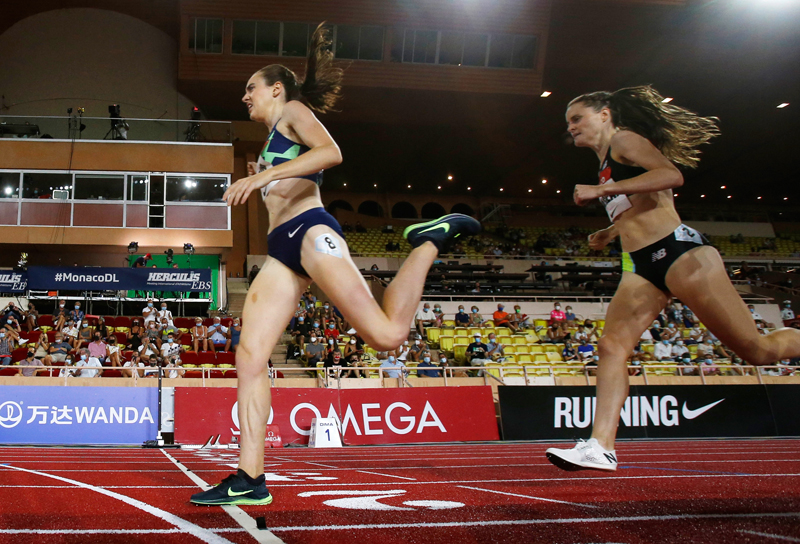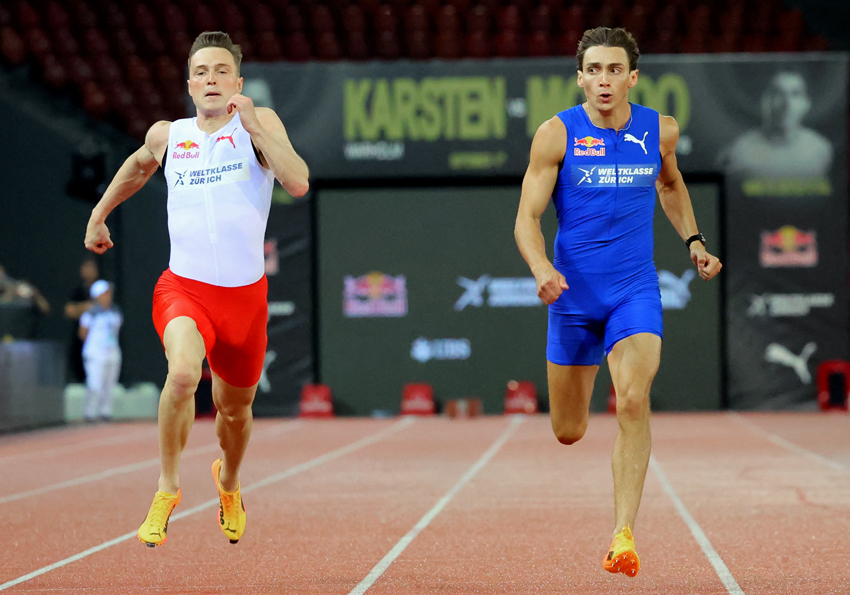Interval training: 30-20-10 for speed and endurance!

As we’ve explained in previous articles, grinding out steady-state, one-pace workouts can only take endurance performance so far. Once the performance plateau that one-paced training inevitably brings has been reached, a more effective method of endurance training is needed. The most widely used method of providing this stimulus in athletic training is via the use of interval training workouts.
There are now dozens and dozens of high-quality studies showing that a wide variety of interval training protocols using varying interval durations and intensities are effective for enhancing the efficiency of both the aerobic and anaerobic energy producing systems in the muscles(1). It’s also a topic we have written about extensively in these articles. In particular, the inclusion of high-intensity intervals in a training program has been unequivocally found to produce greater fitness gains than just adding in extra steady-state aerobic training(2). In short, interval training is popular because it works!
Can shorter intervals give big gains?
Compared to longer, more traditional intervals lasting four minutes or more per interval, high-intensity intervals are relatively short, typically lasting a minute or even less (necessarily so because of the high intensity!). These high-intensity type intervals were originally pioneered by a Japanese researcher called Izumi Tabata. Tabata discovered that just 8 x intervals of 20 seconds of work interspersed with 10 seconds of rest produced excellent gains in fitness(3). In particular, he demonstrated that his high-intensity protocol:
· Achieved very substantial gains in aerobic capacity (cardiovascular fitness).
· Produced anaerobic (speed/power) benefits for athletes that could not be achieved with steady state aerobic exercise alone.
· Required less time to produce the equivalent gains observed in other types of interval training.
The rest, as they say, is history and ever since then, the use of high-intensity intervals to enhance endurance performance has grown hugely in popularity. In particular, high-intensity intervals have become popular for those who wish to develop speed-endurance – in other words to sustain a faster pace over short to medium distances. Numerous studies show that repeated bouts of 5 to 40 seconds at near to maximal-intensity exercise with rest periods greater than five times the exercise bouts, has been found to improve performance of 10–50 min events in both untrained and trained subjects(4-6).
Mixed intensity intervals
When performing high-intensity intervals, sessions can be adapted by altering the duration of the intervals, the rest periods in between and the number of intervals per sessions. The intensity of the intervals themselves are rarely altered within a session, However, in recent years, the effect of intervals where there is switching between low-, moderate-, and high-intensity has been studied, and found to give good results(7,8). Indeed, new research on the use of variable-intensity intervals to improve training outcomes was highlighted in an SPB article by Andrew Sheaff, published only a year ago. Basically, this research found that either increasing or decreasing interval intensity resulted in a better aerobic training stimulus than using constant-intensity intervals(9).
One method of varying intensity within an interval session is with the use of ‘30-20-10’ sessions. In 30-20-10 interval training, intervals consist of consecutive 1-minute intervals, each of which contain 30 seconds of low intensity, 20 seconds of moderate and 10 seconds of high-intensity exercise effort. Although a less well known approach to varying intensity in a high-intensity session, 30-20-10 training has been shown to improve performance of both untrained and trained subjects. Specifically, 30-20-10 training in recreational runners has been demonstrated to improve 5km performance by 4%(8) and intermittent endurance exercise performance of elite soccer players by 18%(10). This mode of intense intervals is thought to be particularly effective because heart rates typically reach around 90%–95% of maximum (a level that maximally stimulates aerobic adaptation), and because it enhances maximal oxygen uptake in both trained and untrained subjects, despite a reduced training volume(11,12).
Improving 30-20-10 intervals
There’s no doubt that 30-20-10 intervals are effective. However, the drawback for recreational endurance athletes is that they are quite intense and tiring to perform. Athletes without a grounding in high-intensity training or novice athletes may therefore find them difficult to perform regularly. It’s a fact of life that recreational athletes are unlikely to have their own coach so may lack the motivation to perform these very high-intensity sessions. A question therefore is can 30-20-10s be made a little easier to perform while retaining most of their benefits?
You need to be logged in to continue reading.
Please register for limited access or take a 30-day risk-free trial of Sports Performance Bulletin to experience the full benefits of a subscription. TAKE A RISK-FREE TRIAL
TAKE A RISK-FREE TRIAL
Newsletter Sign Up
Testimonials
Dr. Alexandra Fandetti-Robin, Back & Body Chiropractic
Elspeth Cowell MSCh DpodM SRCh HCPC reg
William Hunter, Nuffield Health
Newsletter Sign Up
Coaches Testimonials
Dr. Alexandra Fandetti-Robin, Back & Body Chiropractic
Elspeth Cowell MSCh DpodM SRCh HCPC reg
William Hunter, Nuffield Health
Keep up with latest sports science research and apply it to maximize performance
Today you have the chance to join a group of athletes, and sports coaches/trainers who all have something special in common...
They use the latest research to improve performance for themselves and their clients - both athletes and sports teams - with help from global specialists in the fields of sports science, sports medicine and sports psychology.
They do this by reading Sports Performance Bulletin, an easy-to-digest but serious-minded journal dedicated to high performance sports. SPB offers a wealth of information and insight into the latest research, in an easily-accessible and understood format, along with a wealth of practical recommendations.
*includes 3 coaching manuals
Get Inspired
All the latest techniques and approaches
Sports Performance Bulletin helps dedicated endurance athletes improve their performance. Sense-checking the latest sports science research, and sourcing evidence and case studies to support findings, Sports Performance Bulletin turns proven insights into easily digestible practical advice. Supporting athletes, coaches and professionals who wish to ensure their guidance and programmes are kept right up to date and based on credible science.









